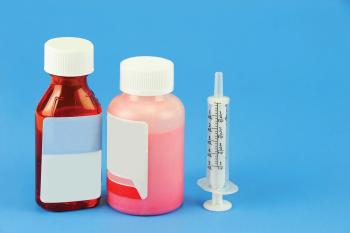
- Pharmaceutical Technology-11-02-2015
- Volume 39
- Issue 11
Demonstrating Therapeutic Equivalence for Generic Topical Products
The determination of topical bioequivalence requires a multi-faceted approach, tailored specifically to the generic-drug formulation.
For a new generic-drug product to be approved by a regulatory agency, it is necessary to prove that it is bioequivalent with a reference product. For orally administered dosage forms, bioequivalence is demonstrated by determination of the pharmacokinetic profile of the generic-drug product and demonstration of similar drug absorption and drug elimination characteristics compared with the reference product.
Demonstration of therapeutic bioequivalence for topical dermatological products, however, is not as straightforward. Most topical dermatological products are designed to deliver the drug to the skin and not into the systemic circulation. Therefore, evaluation of blood pharmacokinetics does not provide information on drug delivery into the skin. A survey of international regulatory bioequivalence recommendations for generic topical dermatological products provides useful insights into currently accepted practices (1). In summary, the approaches that can be used to demonstrate bioequivalence are:
- bioequivalence study with clinical endpoint
- bioequivalence study with pharmacodynamics endpoint
- in-vivo dermatopharmacokinetic study
- bioequivalence study with in-vitro endpoint
- waiver from bioequivalence study.
Almost all regulatory authorities will require data from a bioequivalence study with a clinical endpoint (i.e., proving that clinical performance of the generic-drug product matches that of the reference product) for most topically applied generic-drug products. These studies often involve a large patient population (n > 500) to provide sufficient data for statistical evaluation. Cost and time for conducting these studies can be significant. Ironically, these studies are often considered to be the least accurate, least sensitive, and least reproducible means of demonstrating bioequivalence for topically-applied products. Sometimes regulatory authorities will also request blood pharmacokinetics, if there are safety concerns relating to possible permeation of the drug into the systemic circulation.
An alternative approach to clinical endpoint studies, which is generally accepted for topical corticosteroid products, is the application of the vasoconstrictor assay (VCA), otherwise known as the human skin blanching assay. This assay is effectively a bioequivalence study with a pharmacodynamic endpoint.
Corticosteroids absorbed into the skin cause a whitening of the skin due to a vasoconstrictive effect. Measurement of skin whitening (by use of a scoring scale or chromameter readings) provides an indication of the extent of absorption and action of the corticosteroid. Although there has been much debate relating to the reliability of data generated by this approach, it is still widely accepted and less costly compared with clinical endpoint studies-however, it only applies to topical corticosteroid products.
In-vivo dermatopharmacokinetic studies can be used to support demonstration of bioequivalence through measurement of absorption of drug into the top layer of the skin, the stratum corneum (SC), as a function of time. Tape stripping is used to determine the depth of penetration of the drug at a given time. This method of determining drug penetration into the skin is applicable to all therapeutic classes of drugs. Nonetheless, acceptability of this approach to bioequivalence testing has been hindered because of the variability in methods and study designs between testing laboratories. Recent advances to the dermatopharmacokinetic principle have been the use of open flow perfusion (OFP) or dermal microdialysis (DMD). These methods involve positioning an ultrathin, semipermeable vessel into the dermis and then perfusing the vessel with a buffer solution. A drug applied to the skin, which permeates the SC, will diffuse into the tiny artificial vessel, and continuous measurement of drug transport into the dermis can, therefore, be measured.
This approach, however, is not relevant for products that are designed to deliver drug into the SC only. To support in-vivo studies, it is usual to conduct additional in-vitro studies to compare in-vitro performance of the generic-drug product versus the reference product (e.g., rheology, pH, droplet size) and also possibly in-vitro release testing (IVRT) using Franz diffusion cells to determine drug diffusion through artificial membranes or into/through skin.
In some cases, it may be appropriate to apply for a waiver from conducting bioequivalence studies-although generally, this situation only applies to topical solution products. To qualify for a waiver, the drug substance and the excipients in the generic-drug product should be qualitatively (Q1) and quantitatively (Q2) the same as in the reference product. Often, it is also necessary to demonstrate that functional attributes (Q3) of the generic drug match the reference product (e.g., pH, particle size, viscosity, etc).
It is apparent that selecting the most appropriate approach for demonstrating bioequivalence for a topical generic-drug product is not a straightforward process. However, there are continuing initiatives within the pharmaceutical industry for harmonization in regulating generic-drug products, particularly topical dermatological products.
In 2012, the International Generic Drug Regulators Pilot (IGDRP) project was launched to support global harmonization for the regulation of generic-drug products. In 2013, a workshop was organized by the Product Quality Research Institute (PQRI) with the objective of addressing the harmonization of regulatory practices relating to topical drug products (2).
One of the conclusions from the workshop was that determination of topical bioequivalence requires a multi-faceted approach, tailored specifically to the generic drug/formulation. Subsequently, a decision tree “strawman” was proposed as a guide for deciding what is required for determination of bioequivalence for a given topical product. The “strawman” is summarized as follows:
- 1st option: Evaluate feasibility of biowaiver based on formulation similarity.
- 2nd option: Is the product amenable to VCA? If so, evaluate feasibility of using the VCA method.
- 3rd option: Is the product amenable to pharmacokinetic determination (i.e., transdermal drug delivery)? If so, conduct a pharmacokinetic study (alone or with other supporting studies).
- 4th option: If the site of action is the SC/epidermis, evaluate clinical endpoint/dermatopharmacokinetics/skin permeability.
- 5th option: If the site of action is the epidermis/dermis, evaluate clinical endpoint/dermal microdialysis/skin permeability.
- 6th option: If the site of action is below the dermis, evaluate clinical endpoint/dermal microdialysis/pharmacokinetics-based bioequivalence study.
Furthermore, the European Medicines Agency published a concept paper (3) on the development of a guideline on quality and equivalence of topical products (EMA/CHMP/QWP/558185/2014), which to a large extent, reflects the recommendations from the PQRI (2013) workshop.
In summary, the three bioequivalence approaches that are currently consistently accepted by regulatory authorities are bioequivalence studies with clinical endpoints, in-vivo pharmacodynamic studies (in particular VCA for topical corticosteroid products), and waivers for topical solutions. Also, most require pharmacokinetic studies if there are safety concerns relating to systemic exposure. However, it is refreshing to see that the regulatory authorities are giving credence to alternative science-based methods for demonstration of bioequivalence, rather than insistence on clinical endpoint studies.
References
1. A.C. Braddy et al., AAPS J, 17 (1) 121-133 (2015).
2. A. Yacobi et al., Pharm Res, 31 (4) 837-846 (2014).
3. EMA, Concept Paper on the development of a Guideline on Quality and Equivalence of Topical Products (London, Dec. 2014).
About the author:
Robert Harris, PhD, is chief technical officer at Juniper Pharma Services.
Article DetailsPharmaceutical Technology
Vol. 39, No. 11
Pages: 26–27, 5
Citation: When referring to this article, please cite it as R. Harris, “Demonstrating Therapeutic Equivalence for Generic Topical Products,” Pharmaceutical Technology 39 (11) 26–27, 51 (2015).
Articles in this issue
about 10 years ago
Using Dynamic Thermal Imaging to Correct Sealing Problemsabout 10 years ago
CMOs Continue to Improve Overall Biomanufacturing Performanceabout 10 years ago
FDA Overhauls Inspection Operationsabout 10 years ago
Good Documentation Practice: Saving Data for the Long Termabout 10 years ago
Identifying Causes Of Delaminationabout 10 years ago
Piloting Track-and-Trace Implementationabout 10 years ago
Advances in Heterocyclic Chemistry for API Synthesisabout 10 years ago
EU’s New Telematics Strategy for the Regulation of Medicinesabout 10 years ago
Exploring the Potential of Continuous CoatingNewsletter
Get the essential updates shaping the future of pharma manufacturing and compliance—subscribe today to Pharmaceutical Technology and never miss a breakthrough.




